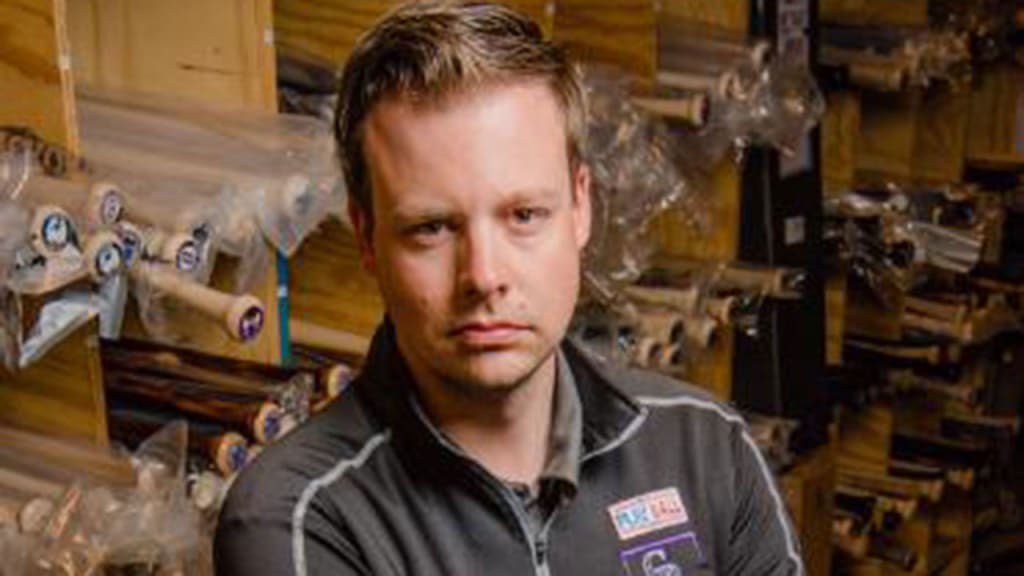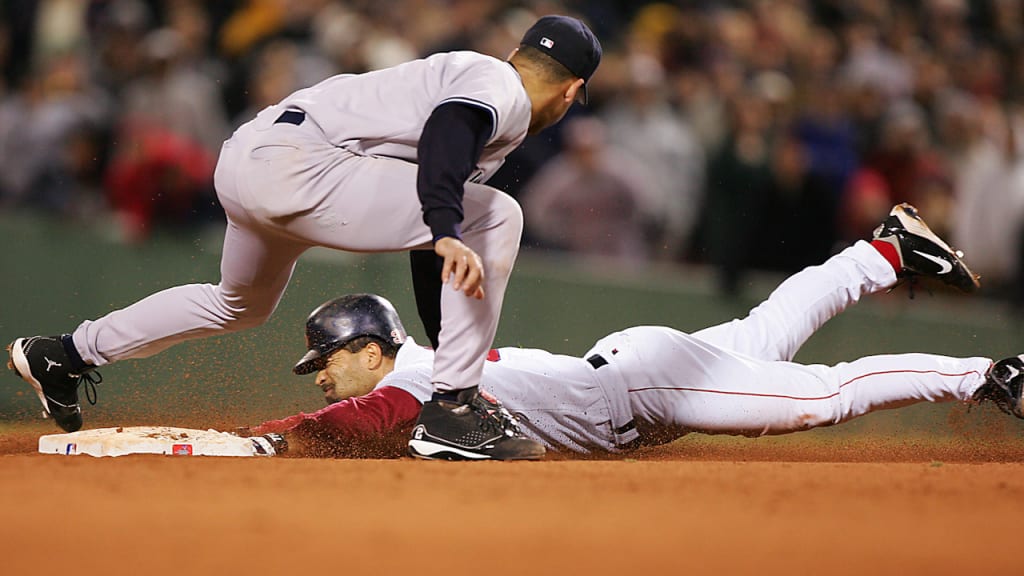Q&A with great-great-grandson of hot dog inventor

Nick Parson grew up with a fascination of baseball. He is, after all, the great-great-grandson of Harry M. Stevens, the man who is oft-credited with inventing the hot dog.
Parson admits, however, the game became a fascination in 2004, when he was a college student in Boston. He took advantage of the family's seats behind the Red Sox's dugout to absorb the excitement of the club putting to rest the "Curse of the Bambino."
"As much credit as I give to Harry M. Stevens for me being in baseball, I have to give as much credit to Dave Roberts, Kevin Millar and [Terry Francona] and all those guys," said Parson, who is a communications coordinator with the Rockies. "I tell them that story and say, 'If you don't draw that walk or steal that base [in Game 4 of the 2004 American League Championship Series], I'm probably not here today.'"
This browser does not support the video element.
It all, however, goes back to Stevens, an English immigrant.
Parson discusses Stevens' spot in baseball history in this week's Q&A.
MLB.com: Stevens was an immigrant from England. What brought him to the United States?
Parson: He was from Derby, England. He was impoverished there. At the time in the late 1800s, industry in the [U.S.] Midwest was really moving. He came over and worked in the steel mills in Niles, Ohio.
MLB.com: How did the fascination with baseball emerge?
Parson: He was a cricket fan and into sports. When he came to the United States, in the late 1800s, baseball was getting more organized, going from town ball to more of a professional sport. He happened to see it one day in Columbus, Ohio, and didn't understand it too well. He had a fascination with it, though, and got interest in pursuing a venture related to baseball.
MLB.com: That's where the program came from?
Parson: Because of his lack of information on the game, he decided something needed to be written about the game so he and his friends from the mills could learn who the players were and how the game was played. He approached the owners of the Columbus Clippers and said, "I would like to buy the advertising rights to this team." Advertising rights didn't really exist. The owner sort of laughed him off. Harry had this idea for a pamphlet about the team and went to local businesses in Columbus. He sold something like $500 in advertising in a short matter of time. It was an incredible amount of money at that time.
MLB.com: And the game program was born?
Parson: He used the advertising to print the programs and started selling them at Clippers games. Then he moved into the concession area. That was really how he built the empire. As baseball became more popular, he moved to New York City. That's where the company [Harry M. Stevens Inc.] was really born.
MLB.com: When he goes to New York, how does he get his foot in the door with the teams there?
Parson: I'm not too familiar with that. I know the beginning and the end, but as far as the middle, there's a lot I'm still learning. I've done research. I try to go to Cooperstown once a year, and I'll go to the library. I have found everything in there from concession contracts to notes on hotel napkins about the financing of the formation of the Mets.
MLB.com: While living in New York, he comes up with what has probably made him most famous.
Parson: It was Opening Day 1901 at the Polo Grounds. The two major concessions items back then were ice cream and steamed peanuts. It was April and it was snowy and nasty, and he was not selling the ice cream. He had the idea to sell German sausages. It turned out they ran out of the waxed paper that the sausages were wrapped in, but still had sausages left. He thought quickly about how he was going to present the remaining sausages and told his errand boy to get a bunch of small French rolls that could be sliced and hold the sausages. He dubbed it a "dachshund sandwich." A cartoonist with the New York Post got a kick out of the German sausage sitting in a piece of bread and drew a cartoon about it. He stylized this sausage as an actual dachshund sitting in a giant piece of bread. The cartoonist had no idea how to spell dachshund, so he went with "hot dog" as the term for the sandwich in the cartoon.
MLB.com: Truth is stranger than fiction?
Parson: There are still people who will dispute the story, because the cartoon was lost. The original does, however, exist, and we actually have it in the family now. I think it was discovered maybe 10 years ago. The cartoon is really a significant piece of what I guess you would call American leisure history.
MLB.com: After that, Stevens founded Harry M. Stevens Inc., which ran concessions for the three teams in New York at the time -- the Dodgers, Giants and Yankees.
Parson: The center of the company was in New York. They expanded to franchises in other cities and in other sports. They were heavily invested in thoroughbred racing. The famous Fenway Frank is what the dachshund sandwich turned into. It is now a cultural staple in New England.
MLB.com: Now, about the Mets. I guess when the Dodgers and Giants moved to California it was your grandfather who had taken over the business after the death of your great grandfather, and the business got hit hard so creation of the Mets became a welcomed idea?
Parson: Definitely. It was in his best interest to have another club in New York City. He had gone from three accounts to one. The company had a great relationship over the years with the Yankees. There's a photo that Babe Ruth gave Harry M., that was addressed, "To my second father, Love, Babe Ruth." It was a Christmas present. But when talk about another National League club in New York started, Harry was involved. He became the exclusive publisher and concessionaire for the Mets, and it really fractured the relationship with the Yankees.
MLB.com: So he supports adding the Mets to get a second client in New York but winds up losing the Yankees?
Parson: Right. He lost pretty much the biggest client, but at that point, Harry M. Stevens Inc. was pretty much everywhere. By then, though, I think the Red Sox were the brand people identified the company with.
MLB.com: Even you became a Red Sox convert.
Parson: It's certainly related to my childhood. I'm going to be 31 in a couple of weeks. I was born in 1986. The company was sold in 1994. All we held onto was the family seats behind the Red Sox's dugout.
